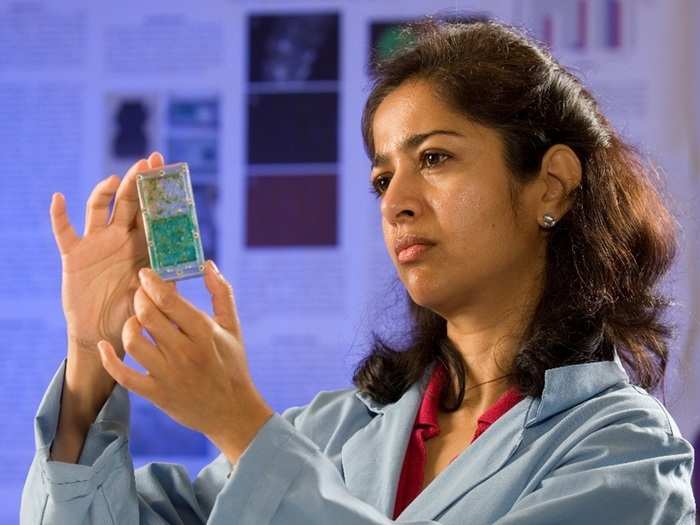
Born in Lagos, Nigeria, Sharmila Bhattacharya, who is heading the Biomodel Performance and behavior laboratory, at NASA Ames Research Center, is one of the top scientist of Indian origin at NASA. As a child, Bhattacharya’s dream was to become a pilot, but later in life her fascination with biology took over. She went to Princeton University to pursue a Ph.D. in Molecular Biology. Later, she went to Stanford for the post-doctoral research degree in Neurobiology. Before joining NASA, Bhattacharya has worked as a scientist at Lockheed Martin, which is a defense company of the United States. Talking about her work at NASA, she says, “I learned a tremendous amount and still continue to learn new things every day... It is through these experiences that I have realized how much we can achieve when we work together across national borders and across scientific and engineering disciplines.”

Ashwin R. Vasavada is another Indian who makes to this list. Currently, the MSL deputy project scientist at NASA's Jet Propulsion Laboratory in California, Vasavada’s key work involves researching the climate history of Mars, the weather on Jupiter and Saturn, and polar ices on Mercury and the Moon. He was also awarded with NASA Exceptional Achievement Medal in 2013 for his contributions. Vasavada got a Ph.D. in Planetary Science from California Institute of Technology. Some of the key spacecraft missions of NASA that this Tamil Brahman has been a part of include the Galileo Mission (Jupiter), the Cassini Mission (Saturn), Mars Polar Lander, and Mars Odyssey.

Another Tamil Brahman in the top list of NASA scientist of Indian origin, Dr Meyya Meyyappan is currently chief scientist for Exploration Technology at NASA Ames Research Center in Moffett Field, California. Nanotechnology is his area of expertise and he has written and co-written more than 225 articles in peer-reviewed journals on various subjects of nanotechnology. For his significant contributions in the area of carbon nanotube application development, he also received the IEEE Pioneer Award in Nanotechnology.

Kamlesh Lulla, a Baroda (India) lad, is director of the University Research, Collaboration and Partnership office at NASA’s Johnson Space Center (JSC), Houston, Texas (US). He has co-authored the book ‘Wings In Orbit’, which talks about various innovations made at NASA over the last 30 years. He has also been awarded the highest honour at NASA as Exceptional Achievement Medal in 2005. Ellison Onizuka Award received in 2012 is another feather in his hat.
Lulla’s inspiration for space science dates back to the year 1969, when he first heard the Voice of America radio broadcast of Neil Armstrong's first steps on the moon. Lulla went to the M.S. University of Baroda and did dual bachelor's in biology and chemistry in 1968 and 1969. He did master's in 1972 and doctorate in 1976 in environmental science and ecology from the same University.

Anita Sengupta is known for her contributions in designing parachute for the mission ‘Curiosity rover’ to Mars. She works as a project manager at NASA’s jet propulsion laboratory (JPL), Greater Los Angeles. Currently, her key project is an ultra–cold quantum gas experiment scheduled to be launched into the International Space Station in the year 2016. Besides space science, Motorcycle riding is her another passion and she loves to explore places on two wheels.
 Stock markets stage strong rebound after 4 days of slump; Sensex rallies 599 pts
Stock markets stage strong rebound after 4 days of slump; Sensex rallies 599 pts
 Sustainable Transportation Alternatives
Sustainable Transportation Alternatives
 10 Foods you should avoid eating when in stress
10 Foods you should avoid eating when in stress

Copyright © 2024. Times Internet Limited. All rights reserved.For reprint rights. Times Syndication Service.